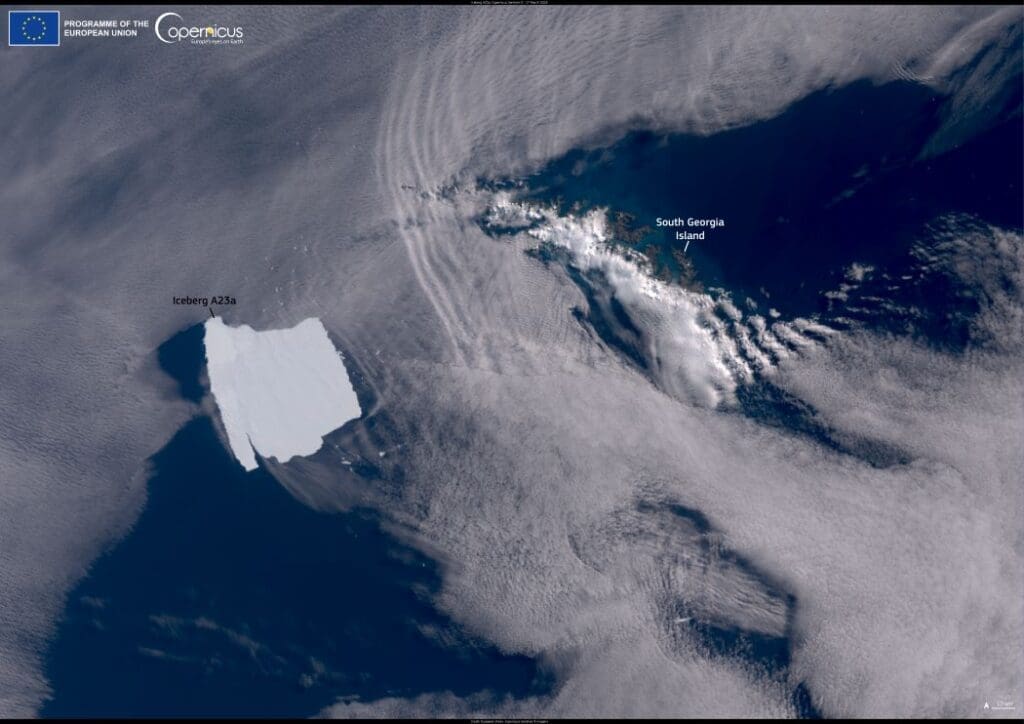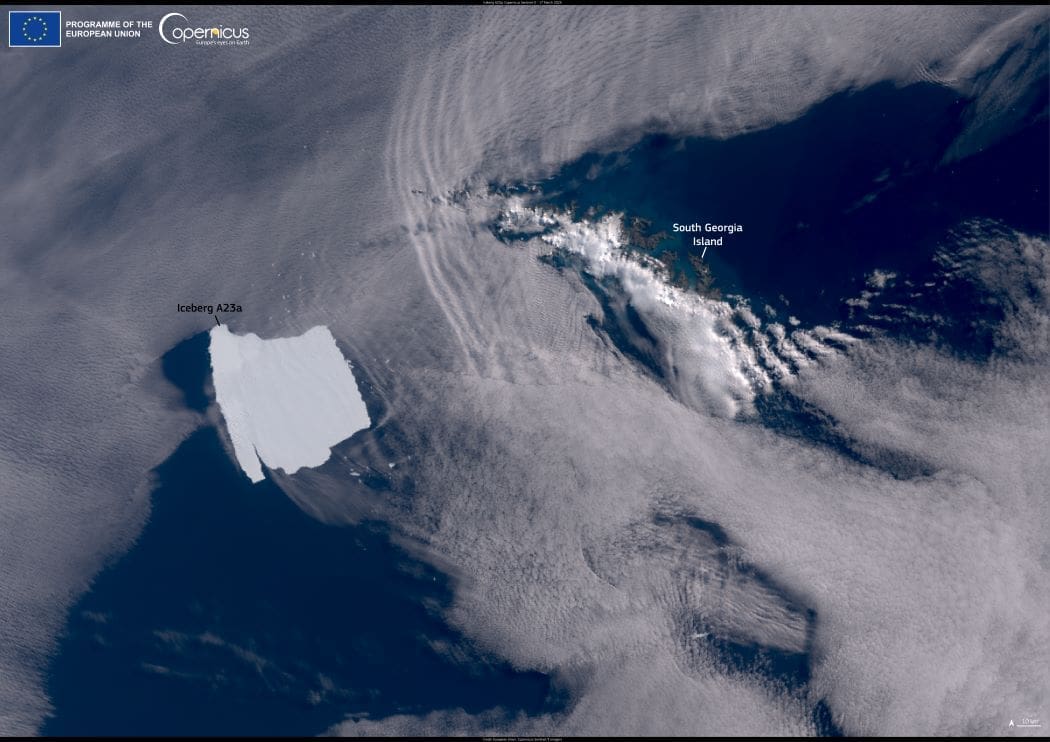This Copernicus Sentinel-3 image, acquired on 17 March 2025, captures the massive iceberg A23a as it runs aground approximately 70 km (43 miles) from South Georgia Island. Once covering 3,900 km2, the iceberg has shrunk to about 3,300 km2 while drifting through the Antarctic Ocean.

A23a began moving again in 2024 after being stuck on the Weddell Sea floor for over three decades. Since December 2024, it has traveled over 350 km, raising concerns about its potential impact on South Georgia’s wildlife. The island is home to large populations of penguins and seals, which rely on open waters for feeding. Researchers suggest that while A23a’s current position may spare the island from a direct collision, its future movement remains uncertain.
Open data from the Copernicus Sentinel satellites provides crucial insights into remote regions like Antarctica, helping scientists track environmental changes and their effects on fragile ecosystems.
Featured image credit: European Union, Copernicus Sentinel-3 imagery




